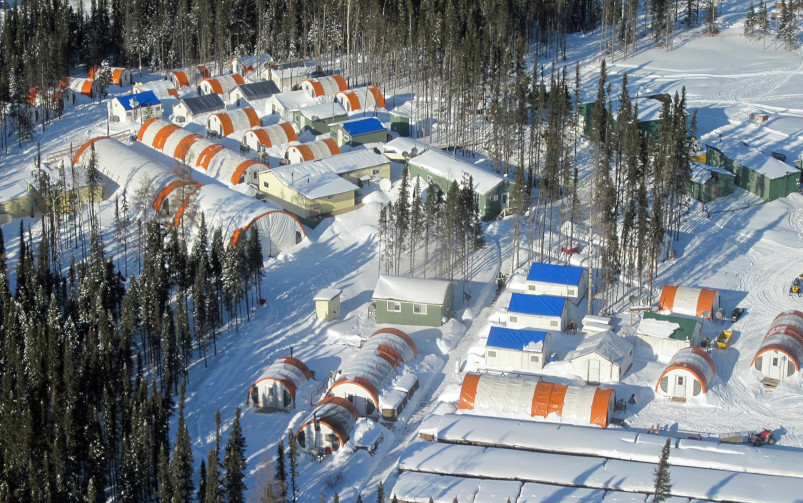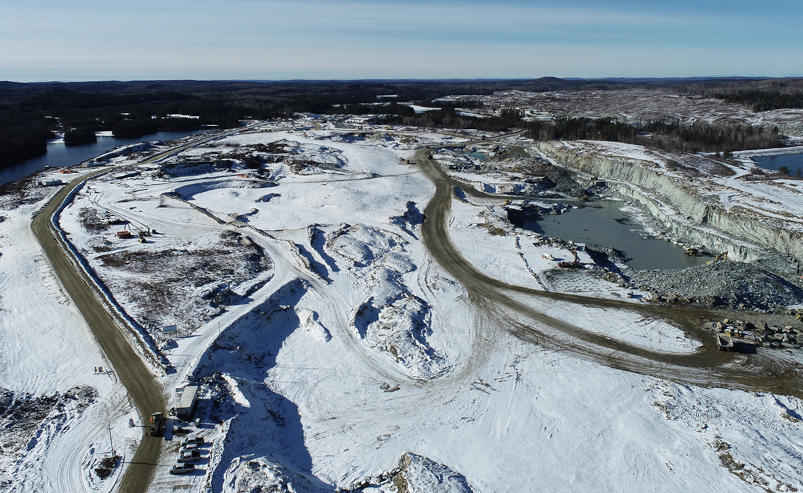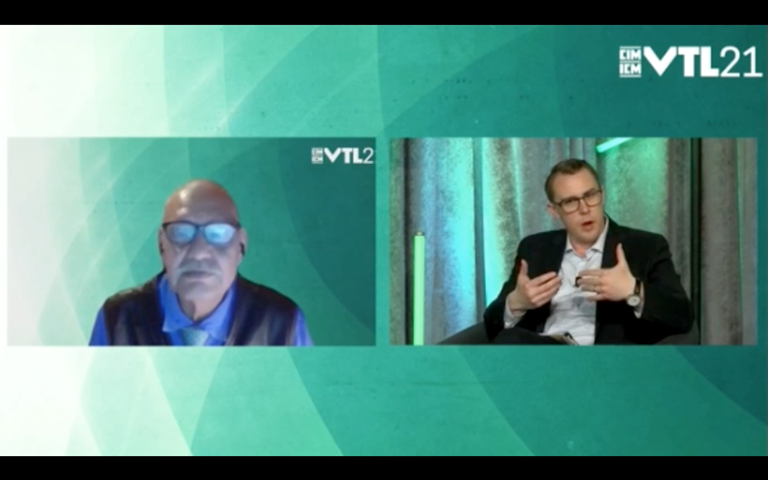Jerry Asp and Jerrod Downey.
How can the mining industry work together with Indigenous communities to empower them to become resilient and thriving actors in our modern economy? This emerged as a key question in Jerry Asp’s thought-provoking and informative keynote presentation to kick off day three of CIMVTL21.
Asp, who co-founded the Tahltan Nation Development Corporation (TNDC) – the largest Indigenous-owned and operated heavy construction company in Western Canada – in 1985, engaged with this question through a brief history of the company’s efforts to expand the fiscal autonomy of the Tahltan Nation. Along the way, Asp’s keynote provided invaluable insights for those interested in how business leaders can not only extend opportunities to Indigenous communities, but also give them the tools to take advantage of those opportunities in ways that provide meaningful change and enable a prosperous and dignified future.
Asp described the recent economic history of the Tahltans as a journey from “Affluence, to poverty, and back to affluence.” In the early 1980s, opposition to fur trapping undermined the Tahltans’ main economic base. The winter of 1983-1984 saw a massive 98 per cent unemployment rate followed by 65 per cent the following summer on the Tahltan territory in northwest British Columbia. “Eighty per cent of our members were on welfare, there was a serious alcohol and drug problem, high suicide rate and low education standards. By 2006 we had 95 per cent employment in the winter and 100 per cent in the summer”, said Asp – an equally massive turnaround.
“So the big question everybody asks is ‘How did we do it?’ Really our method was simple: we had a vision – we wanted to eradicate unemployment and bring some pride and dignity back to our nation. [...] The vehicle we chose was the Tahltan Nation Development Corporation.” The TNDC was an effort, according to Asp, to escape from the Department of Indian Affairs’ (DIA) short-sighted approach of opening funding for “mom and pop” projects in indigenous communities, without the scale or resultant growth potential to enable economic independence at the community level. This is what inspired the inclusion of the word “Nation” in the company’s name – the goal was not to foster short-term individual independence, but long-term, structural change to the shattered Tahltan economy.
This nation-building strategy inspired TNDC to look off-reserve for solutions, rather than towards the DIA. “Mining, forestry, and hydro development is where we looked, we figured we needed to deal with resource developers. But before we did that, we wrote a development policy,” which asked that developers provide, among other things, employment opportunities and training for Tahltan workers, respect for Tahltan aboriginal rights, environmental protection, and education.
Asp went on to describe some of the mining projects TNDC has engaged in, including Golden Bear, Galore Creek, Red Chris, Brucejack and concluded that in 2019 the Tahltans received around $16.5 million in employment and contracting revenue from the mining industry. According to Asp, the company has had a significant impact on the employment turnaround, and TNDC continues to generate revenue and job opportunities for the Tahltan economy. “In the 2019/20 fiscal year we made $27.6 million in revenue, paid $11.6 million in wages, 85 per cent of the employees are Tahltan, and 94 per cent of all employees are First Nations”.
Asp’s optimistic takeaway from this was that, “if the Tahltans can do it, any Indigenous community can do it! You just need a vision, a strategy, and a vehicle to carry that vision to fruition.”
In view of his long career engaged with the mining industry, Asp concluded his presentation by providing more focused advice on “how companies can assist Aboriginal Communities to become resilient and to thrive”.
“Well, first, you need to meet with Aboriginal communities and ask how they would like the relationship to proceed. That’s most important...at some point you have to drink a lot of tea. [Second,] implement the Engineers Without Borders report: ‘The Mining Industry and Aboriginal Procurement’. [...] I think if this is followed it will go a long way to moving things forward for aboriginal communities and the mining industry,” he said. “[Third,] it’s not enough to provide a stream or lake to fish in, you also have to provide the tools. Because in my opinion, what’s the point of having an opportunity if you can’t take advantage of it?”




